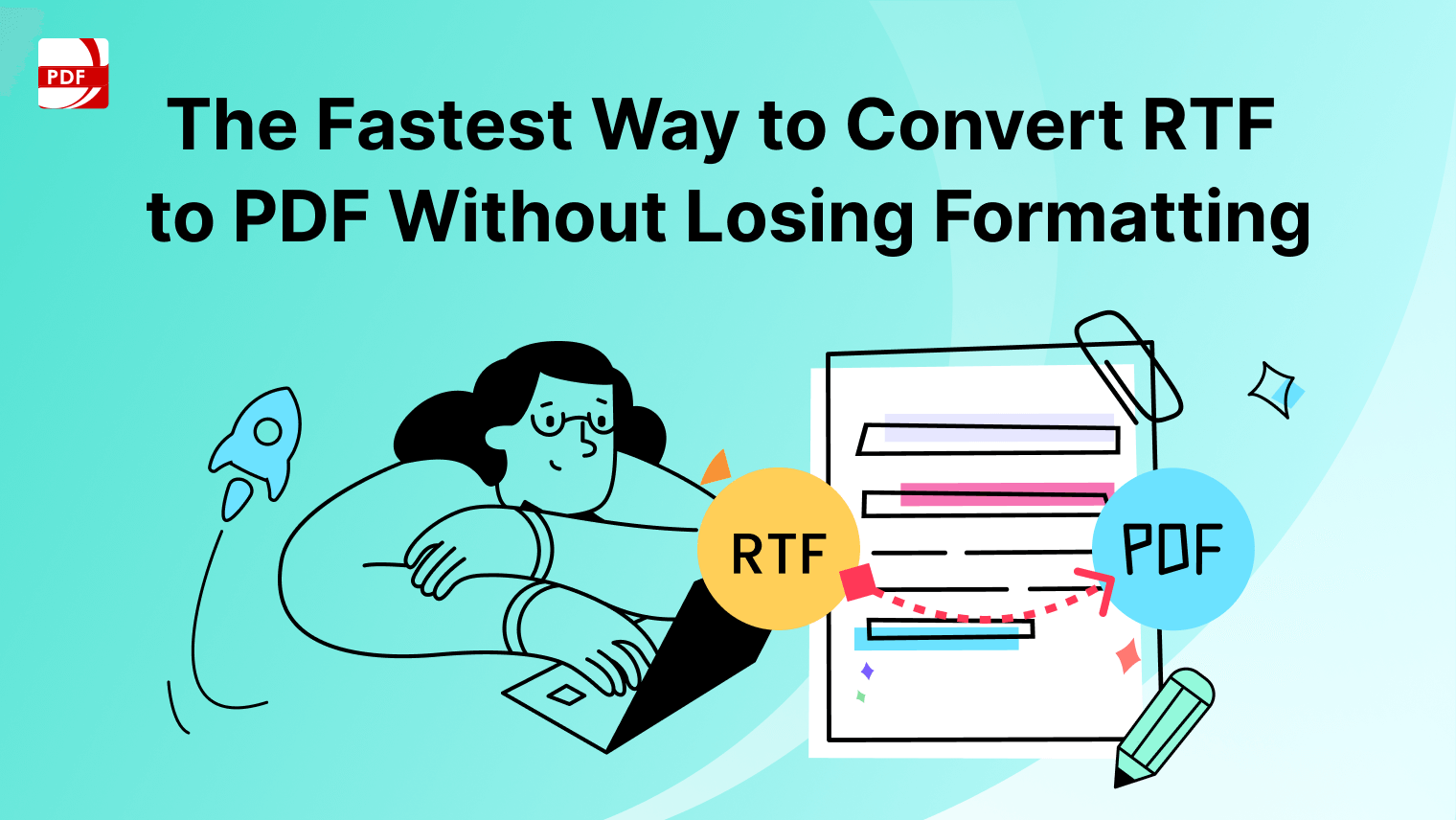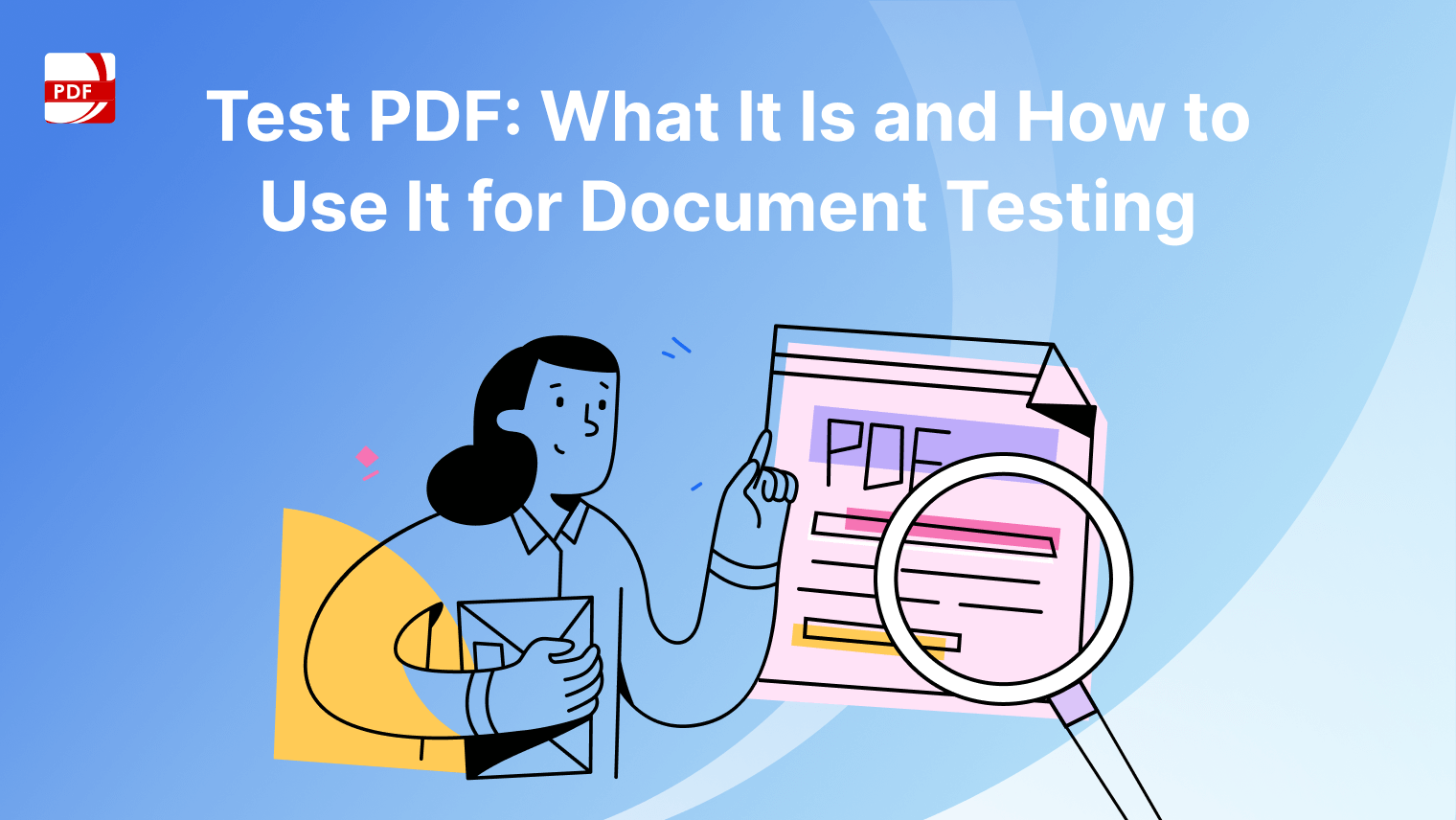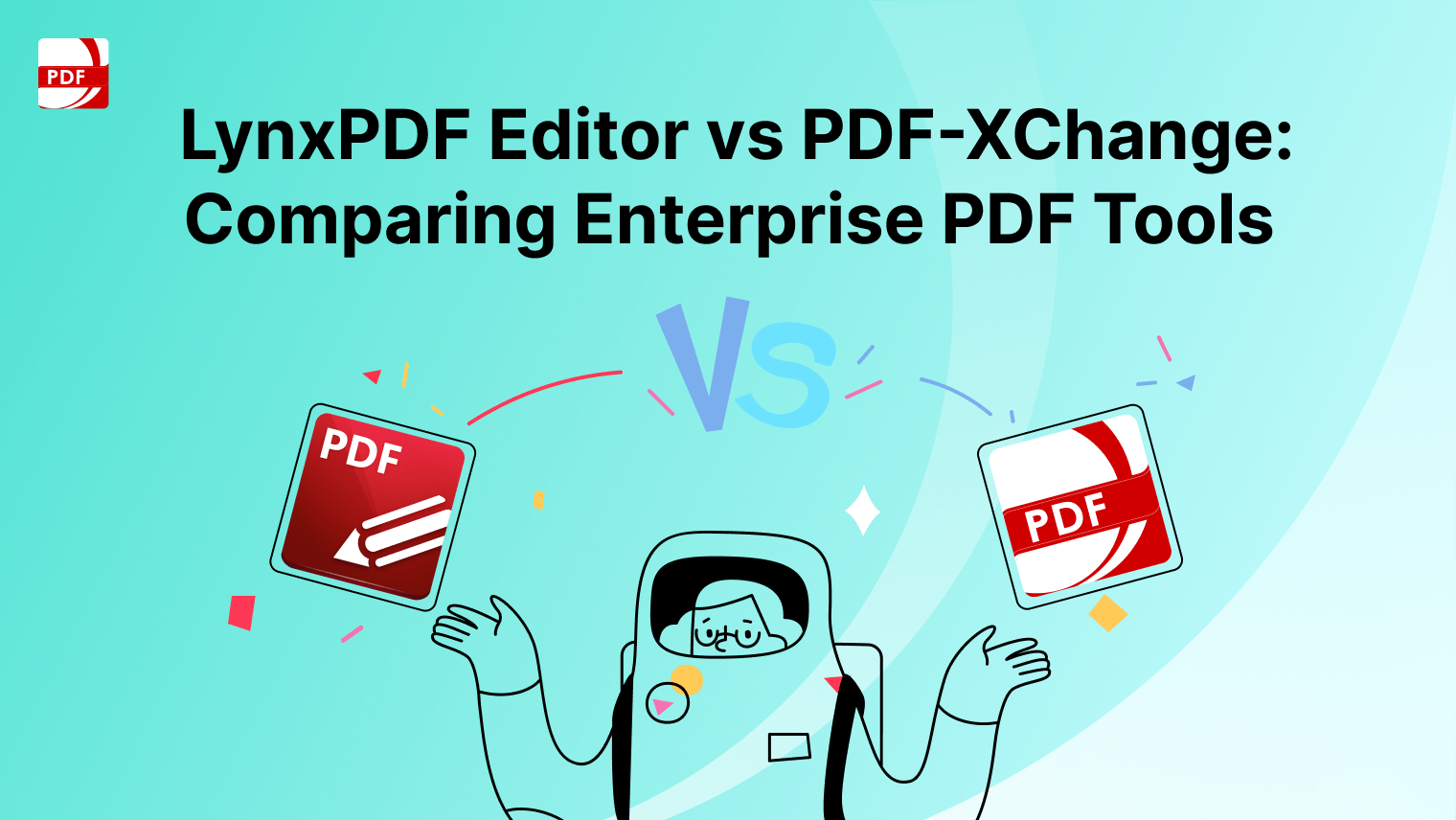Printing secure documents requires careful consideration of both the method and the location to ensure confidentiality and integrity. Whether it's legal papers, financial records, or sensitive business information, choosing the right printing service is crucial.
Step-by-step Guide on Printing Secure Documents Safely
Many businesses prefer using trusted professional printing services that provide these features, ensuring that sensitive information remains protected throughout the entire printing process. Here is step-by-step Guide how to work with secure documents safely.
1. Download and Install LynxPDF Editor
If you haven’t already, download LynxPDF Editor from the official website. Install the software following the on-screen instructions. Ensure that you are downloading it from a secure source to avoid any security risks.
2. Open the Document in LynxPDF Editor
Launch LynxPDF Editor and open the document you need to print. You can drag and drop the file into the editor or use the 'Open File' option in the menu.
3. Encrypt the Document
Before printing, it's crucial to encrypt the document to protect its contents. In LynxPDF Editor, go to the 'Security' tab and select 'Encrypt with Password.' Choose a strong password that includes a mix of letters, numbers, and symbols. This ensures that only authorized individuals can access the document.
4. Check and Modify Permissions
Set specific permissions for the document to control what can be done with it. For example, you can restrict editing, copying, or printing without further authentication. Under the 'Security' tab, go to 'Permissions' and configure the settings according to your needs.
5. Save the Secured Document
Once you've encrypted the document and set the necessary permissions, save the file. Use the 'Save As' option to create a new, secured version of the document. This ensures that your original document remains unaltered.
6. Connect to a Secure Printer
Ensure that your printer is connected to a secure, password-protected network. If you’re in an office setting, verify that the printer and network have the necessary security measures, such as encryption and access controls.
7. Print the Document
Go back to LynxPDF Editor, open the secured document, and select 'Print' from the menu. Choose the printer you want to use, and make sure to review the settings before proceeding.
For added security, consider printing using 'Secure Print' options if available on your printer, which requires authentication at the printer before the document is released.
8. Shred Unneeded Printouts
After printing, securely dispose of any unneeded copies. Use a shredder to destroy any printouts that contain sensitive information to prevent unauthorized access.
9. Monitor the Printing Process
If you’re printing in a shared environment, keep an eye on the printer to ensure that no one else retrieves your documents. If using an office printer, ensure that access to the print queue is restricted to authorized personnel.
10. Log Out and Close the Document
Once you’ve finished printing, log out of any accounts you used during the process and close LynxPDF Editor. This prevents any unauthorized access to your files or software.
Options for Printing Secure Documents
Printing at Home with Security Measures
Printing sensitive documents at home can be a good option for maintaining control over the process. When printing at home, you can avoid the risks associated with third-party handling. However, it's essential to implement security measures to protect your information.
Start by ensuring your files are password-protected before printing. Use a secure Wi-Fi connection to prevent unauthorized access to your printer. Once printed, be sure to shred any documents you no longer need to prevent sensitive information from falling into the wrong hands.
Using a Secure Office Environment
If you have access to a secure office environment, this can be an effective option for printing sensitive documents. Ensure that the office printer and network are secured with encryption and access controls.
Limit access to the printer to authorized personnel only, and regularly update security settings to keep up with potential threats. A controlled office setting allows you to print documents securely while minimizing the risk of unauthorized access.
Professional Print Services with Security Certifications
For those who need to print large volumes of secure documents or require specialized services, professional print services with security certifications are a reliable choice. Look for providers that have certifications like ISO 27001, which demonstrates their commitment to information security management.
These services often offer advanced security features, including encryption, secure file transfer, and controlled access to printed documents, ensuring your sensitive information remains protected.
On-Site Printing Kiosks with Encryption
Secure printing kiosks, often found in business centers or libraries, provide another option for printing sensitive documents. These kiosks typically offer encryption and temporary file storage options to protect your data.
Before using a kiosk, ensure it has the necessary security features, such as encrypted connections and automatic deletion of files after printing. This can be a convenient option when you need to print on the go but still require a high level of security.
Cloud-Based Secure Printing Solutions
Cloud-based printing platforms offer secure options for printing documents from virtually anywhere. These solutions often use encryption to protect your files during transmission and storage.
Examples of cloud printing services that prioritize security include Google Cloud Print (now discontinued but replaced by other services) and HP's Secure Print. These platforms allow you to manage printing remotely while ensuring your documents are protected throughout the process.
Choosing the Right Secure Printing Solution
Assessing Your Security Requirements
The first step in choosing a secure printing solution is to assess the level of security your documents require. Start by evaluating the sensitivity of the information you need to print.
For instance, personal identification documents, financial statements, and legal contracts may require higher levels of security compared to less sensitive materials.
Cost vs. Security
Balancing your budget with the need for secure printing is crucial. While higher security often comes with increased costs, it’s essential to weigh these expenses against the potential risks and consequences of inadequate security.
For home printing, investing in a quality shredder and a secure Wi-Fi connection may be sufficient. In contrast, businesses handling highly confidential information might need to allocate more resources towards professional printing services with robust security certifications.
Finding a solution that aligns with both your budget and security needs ensures that you’re adequately protected without overspending.
Ease of Use and Accessibility
The usability of a secure printing solution is another important factor to consider. A system that is easy to use and accessible can streamline the printing process, making it more efficient while maintaining the necessary security standards.
Look for solutions that integrate seamlessly with your existing workflows, whether it’s a cloud-based platform with user-friendly interfaces or a professional service that offers convenient access to secure printing options.
A secure solution that is too complex or difficult to use may lead to mistakes or lapses in security, so finding a balance between functionality and safety is key.
Best Practices and Tips
Here are some best practices. By following them you can significantly reduce the risk of unauthorized access to sensitive documents and ensure that your information remains protected throughout the printing process.
1. Use Encryption
Always encrypt your files before sending them to be printed, whether you're using an online service, a networked office printer, or even printing at home. Encryption ensures that even if someone intercepts your document, they won't be able to access its contents without the decryption key.
2. Password Protect Sensitive Documents
Apply a password to your document files to add an extra layer of security. This prevents unauthorized individuals from opening or editing the document before it’s printed.
3. Secure Your Network
Ensure that your Wi-Fi network is secure and protected with a strong password. Avoid using public Wi-Fi networks when sending documents to a printer, as they are more susceptible to hacking.
4. Choose Trusted Print Services
If you need to use a third-party service, select one that specializes in secure document printing. Look for services that offer encryption, secure file transfer, and have security certifications like ISO 27001.
5. Limit Access to Printed Documents
When printing in an office or using a professional service, ensure that only authorized personnel have access to the printer and the printed documents. Implement access controls and monitor the printing process to prevent unauthorized handling.
6. Pick Up Prints Promptly
Retrieve printed documents immediately after they are printed, especially if you are using a shared or public printer. Leaving sensitive documents unattended on a printer increases the risk of unauthorized access.
7. Shred Unnecessary Copies
After printing, securely dispose of any extra copies, drafts, or misprints by shredding them. This helps prevent sensitive information from being recovered by unauthorized individuals.
8. Regularly Update Printer Security Settings
Keep your printer’s firmware and security settings up to date. Regular updates often include security patches that protect against vulnerabilities.
9. Monitor Print Jobs
Implement print monitoring software or features that log who printed what and when. This can help track any unauthorized attempts to print sensitive documents.
10. Educate Employees on Security Protocols
If you're in a business environment, ensure that all employees are aware of and follow secure printing protocols. Regular training on the importance of document security and best practices can help prevent accidental breaches.
FAQ
1. What Should I Look for in a Secure Printing Service?
When choosing a secure printing service, prioritize those that offer encryption, secure file transfer, and have strong privacy policies. Look for certifications like ISO 27001, which indicates that the service adheres to international standards for information security.
Also, check customer reviews to ensure that the service has a reputation for handling sensitive documents securely.
2. Is It Safe to Print Sensitive Documents at Home?
Printing at home can be safe if you take the right precautions. Ensure your Wi-Fi network is secured with a strong password and use encryption for your files. Additionally, shred any documents you no longer need and keep your printer’s firmware updated to protect against vulnerabilities.
3. Can I Use Public Printing Kiosks for Secure Documents?
Public printing kiosks are generally not recommended for highly sensitive documents due to the risks of unauthorized access and the lack of control over the security settings.
However, if you must use a kiosk, choose one that offers encryption and ensure that the files are deleted immediately after printing.
4. How Can I Ensure My Office Printer is Secure?
To secure your office printer, use a private network with strong access controls and ensure that all print jobs are encrypted. Regularly update the printer’s firmware, set up user authentication, and limit access to the printer to authorized personnel only.
It’s also a good idea to monitor print logs to keep track of all activity.
5. What Are the Risks of Not Securing Printed Documents?
Failing to secure printed documents can lead to unauthorized access, data breaches, and potential identity theft. In a business context, this can result in legal liabilities, financial loss, and damage to your reputation. It’s crucial to implement security measures to protect sensitive information throughout the printing process.



